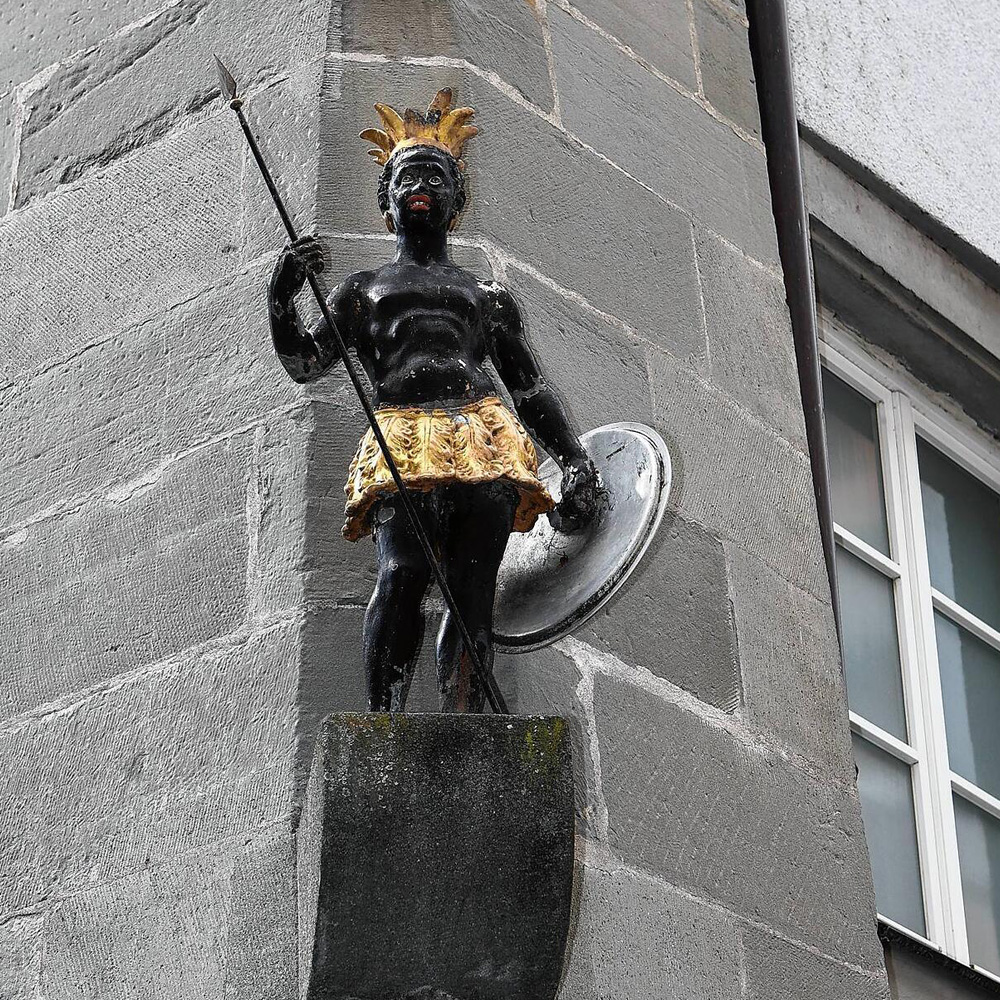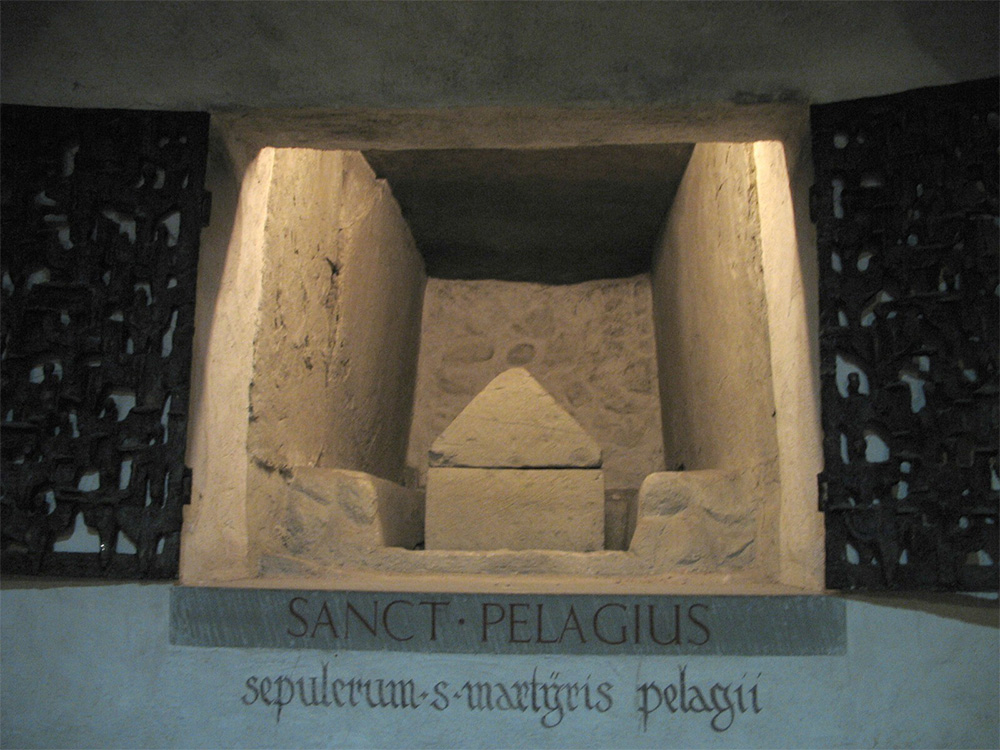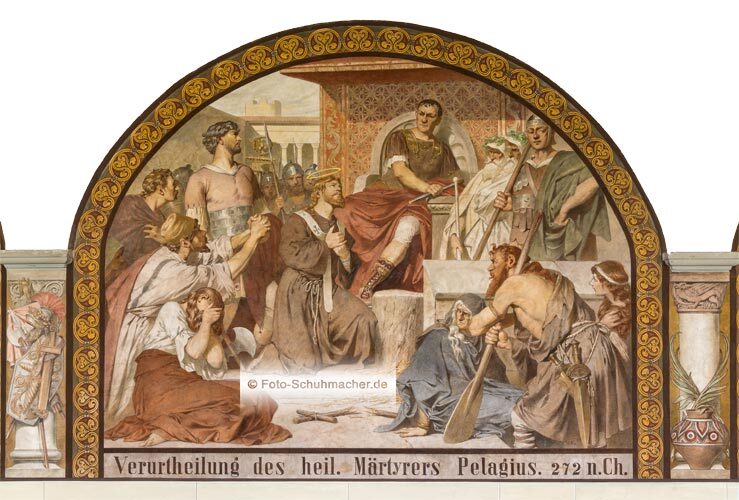Home / About
About
Our history
“In 1738, Johann Konrad Gießler, who had previously been court apothecary to the bishop residing in Meersburg, bought the house “Zum hinteren Mohren” in order to set up a pharmacy there. It was his descendant Jakob Gießler who moved the pharmacy to the neighboring corner house “Zum vorderen Mohren” in 1788. The latter house was first mentioned in a document in 1378; according to its construction, however, it was probably built in the 11th or 12th century”. – Apotheker Zeitung – 132nd year – No. 18 – 30.04.1992.
“When Constance in the Middle Ages still had no numbering of the houses, which was only introduced very late – around the turn of the 18th/19th century – house names or paintings were used to identify the individual buildings… But let us return to the “Moor”, who makes the “Moor Pharmacy” recognizable by a real representative – with feather crown and bast skirt, as a weapon shield and spear. A fantasy figure of colonialism? No, a real likeness of the African warrior as late as the 18th century; but we also encounter this type of Egyptian rock paintings, together with hieroglyphic writing from the pharaonic empire… The name “Moor” emanated magic and enchantment, a reference to exotic faraway places: Spices and active ingredients from Eastern countries; drinks, mixtures and ointments mixed by the pharmacist are often based on alchemical magic and secret recipes; magic is said to help with recovery, and the figure of the Moor is also supposed to point to indicate this.” – Alfons Beck (teacher, local historian, art painter, district caretaker)

The former Mohren-Apotheke was renamed on 01.10.2024 and continued to operate under the new name St. Pelagius Apotheke.
“The world and the pharmacist profession have changed rapidly and this change requires new services, digital solutions, a high degree of adaptability and a comprehensive openness towards all our fellow human beings.
This constant change brought with it that the word ”Moor”, which was harmless back then in the 14th century, nowadays has a contested, even negative meaning, especially for people who are unaware of its original history. I leave the classification and assessment of the word to the experts, linguists and, above all, the people now living in the 21st century, as colorful and diverse as it is.
For me personally, as the owner of the pharmacy, it is extremely important that all my customers feel comfortable and welcome.
Just as it is with naming a child, it is almost impossible to find a company name that everyone likes equally. Renaming the pharmacy is not a disregard for the historical past, but a clear and deliberate move for the future. As the building is under monumental protection, the Moor figure on the façade will remain as a symbol of the pharmacy’s dignified, centuries old history.
With the new name ”St. Pelagius Apotheke”, patron saint of Constance, I will do my very best to continue the business in a traditional, yet contemporary and future-proof way, with maximal respect for the historic past of the Mohren-Apotheke.
Why did I choose the patron saint of Constance of all people?
As health professionals, we stand for the city of Constance every day, and above all for all our customers, whom we serve, advise and protect. The patron saint is therefore a symbol, an ideal and a vision for us.” – Kristof Komlosi, pharmacy owner.
Who was Saint Pelagius?
The reliquary of St. Pelagius (9th century) in the Cathedral of Our Lady in Konstanz
“Before the bones of the martyr Pelagius were transferred to Constance, the cathedral did not have a significant relic treasure. However, this was essential in order to consolidate the episcopal rule and to develop a supra-regional radiance. The relics were probably acquired in the 9th century by Bishop Solomon I on a trip to Rome and placed in the cathedral in the stone sarcophagus that can be seen today. In the following century, veneration of the saint increased and Bishop Solomon III had a more magnificent reliquary made. A detailed description of the goldsmith’s work can be found in the Constance treasure register from 1343. However, it was presumably destroyed along with the relics during the Reformation in the 16th century, which is why the original, but now empty, stone sarcophagus was used again.
The reliquary of St. Pelagius is located in the crypt, the oldest part of Constance Cathedral. The relics were probably transferred from the city of Ernona (Roman province of Upper Panonia) under Bishop Solomon I in the middle of the 9th century and are still in their original location today. The crypt in which the stone shrine is located is set 0.12 m into the ground and 1.06 m high, while the shrine itself is stored within the crypt in a 0.35 m deep shaft. (Prange 2012, 116 ff)” – LKM University of Constance

Historical fresco in the Steigenberger Inselhotel Konstanz:
Condemnation of the holy martyr Pelagius. 272 AD, condition 2014.
“The martyr Pelagius is kneeling in the center of the picture, dressed in a wide cowl, his hands clasped in front of his chest.
The wooden stake in front of him, the executioner standing behind him with his sword, the broken cross on the ground, the halo and the upward gaze all indicate his imminent martyrdom.
Evilasius is supposedly sitting on the stone throne under the canopy as the president of the Roman emperor Numerian. He is leaning to one side and thus, like numerous other diagonals (scepter and leg), points to the saint.
Two pagan priests stand to the right of the judge, a fortune teller lies on the ground at the bottom right. This pagan right and upper side is intended to attract all negative emotions.
In contrast, the Christian followers of Pelagius are on the left, pleading and mourning for his life. This Christian lower left side draws all positive emotions to itself. It forms the classic contrast to the pagan side on the right and above.”


Kristof Komlosi (dr. pharm.)
Pharmacist & Entrepreneur
Multilingual pharmacist & entrepreneur with work experience in Germany, Hungary, Spain and the Netherlands. Recognised pharmacist in the whole DACH-region. Certified oncology pharmacist by the German Society for Oncological Pharmacy (DGOP) since 2021.
Our Brands
Opening Hours
Monday
08:30 – 18:30
Tuesday
08:30 – 18:30
Wednesday
08:30 – 18:30
Thursday
08:30 – 18:30
Friday
08:30 – 18:30
Saturday
09:00 – 17:00
Sunday
CLOSED